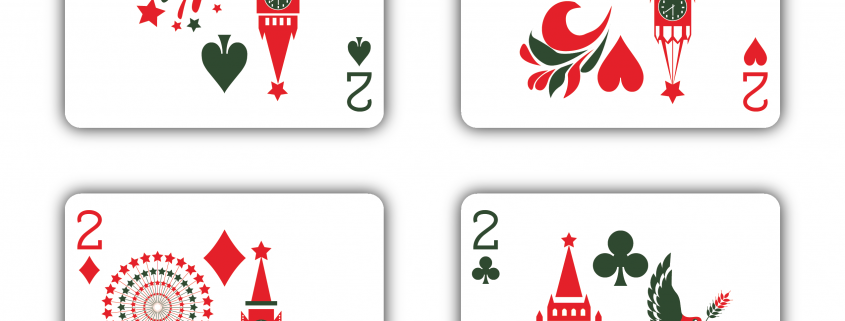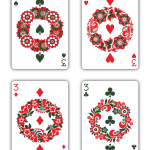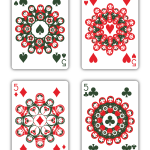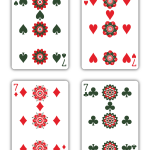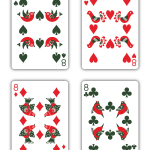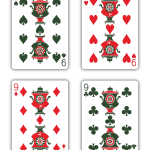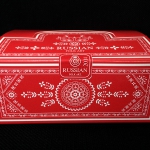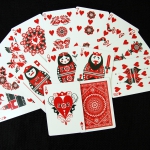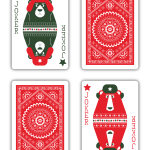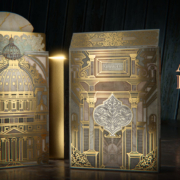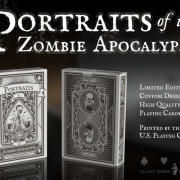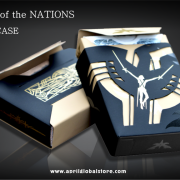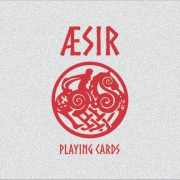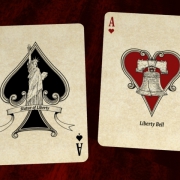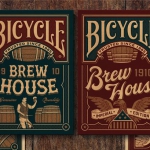Bicycle Russian Folk Art Playing Cards. From Russia with Art
I enjoy a lot those decks that give me the chance to know more about the creator and the culture behind the inspiration. This is one of those cases where the inspiration has one million of details about that culture: Bicycle Russian Folk Art.
From the very first glance, every detail of the design makes Russia come to your mind. The artist, Natalia Silva, wanted to design something new, unique, something never created before so, since she is originally from Russia, a Russian Folk Art deck seemed to be the perfect choice because nobody did it before and the theme was very close to her.
I’ve contacted Natalia and she has told me about the elements of the deck with such a great enthusiasm that I have decided to reproduce her words instead of make my own discourse with them:
Every card has it’s own unique design and element from Russian traditional folklore and the court cards were inspired by Matryoshka or Russian Nesting Doll.
Nature has always been a common theme in Russian Folk Art. In Russia people believe that different design elements serve as symbols to protect them from evil forces, to bring wealth, health and love. The folk art decorated with endless ornaments and floral designs: stylized flowers, leaves, buds, stems and the like. That’s why my deck has so much floral elements and ornaments.
As for the color choice, I am using 3 colors in Russian Folk Art deck – White, Red and Green.
I did a lot of research about Russian Folklore and traditional colors. I decided to use red, white and green because these colors in Russian folk art were a representation of the blossoming of the earth, and the blossoming of the creative spirit.Red is a prominent color in Russian culture and history. The red color represented the beauty. The Russian word for red, “Krasni”, was, in the past, also used to describe something beautiful. Red Square, or Krasnaya ploshad, is one of the most famous examples of the red. Red Square, the most important square in Moscow, sits adjacent to the Kremlin. Many place names in Russia contain the root word for “red” or “beautiful”. For example, the city where I grown up, Krasnodar, means beautiful gift. Red, the color of blood and life, features prominently in Russian folk costumes. Red was the first color people used for coloring cloth. They started to use it as early as in Paleolithic Period, first for ritual purposes. It is obvious that red color symbolically means blood and fire. As a symbol of blood, it shows energy flow between nature and human being. Besides, according to pagan Russian beliefs, gods of Fire and Sun were men. So, red color symbolized Male Power (productive, fertile, defensive) – both in spiritual and physical (practical) aspects.
White is a natural color of wool and linen. People wore white clothes during any period of transformation of their social role. Russian people believed that during any life transition (childhood/teen age, or single/married status) the border between material and spiritual world becomes thin and transparent. The people who must wear white (pure white, without any decoration) were children before age of 7-8, seniors (after 60), brides and military recruits. Besides, white color was a symbol of motherhood (and of a married woman), in contrast with red – a color of a young girl.
Green is the color of nature. It symbolizes growth, harmony, freshness, and fertility. Green has strong emotional correspondence with safety. Dark green is also commonly associated with money. The color green affects us physically and mentally in several different ways. Green is soothing, relaxing, and youthful. Green is a color that helps alleviate anxiety, depression, and nervousness. Green also brings with it a sense of hope, health and renewal, as well as self-control, compassion, and harmony.
These are just some of the many cultural references that can be found in this deck and that are explained in the project page. After all this, I can only show you a fantastic set of hi-res images to appreciate every detail of this deck that will be printed by the USPCC.
If you like the deck, visit the project website and raise your pledge.
Good luck!

